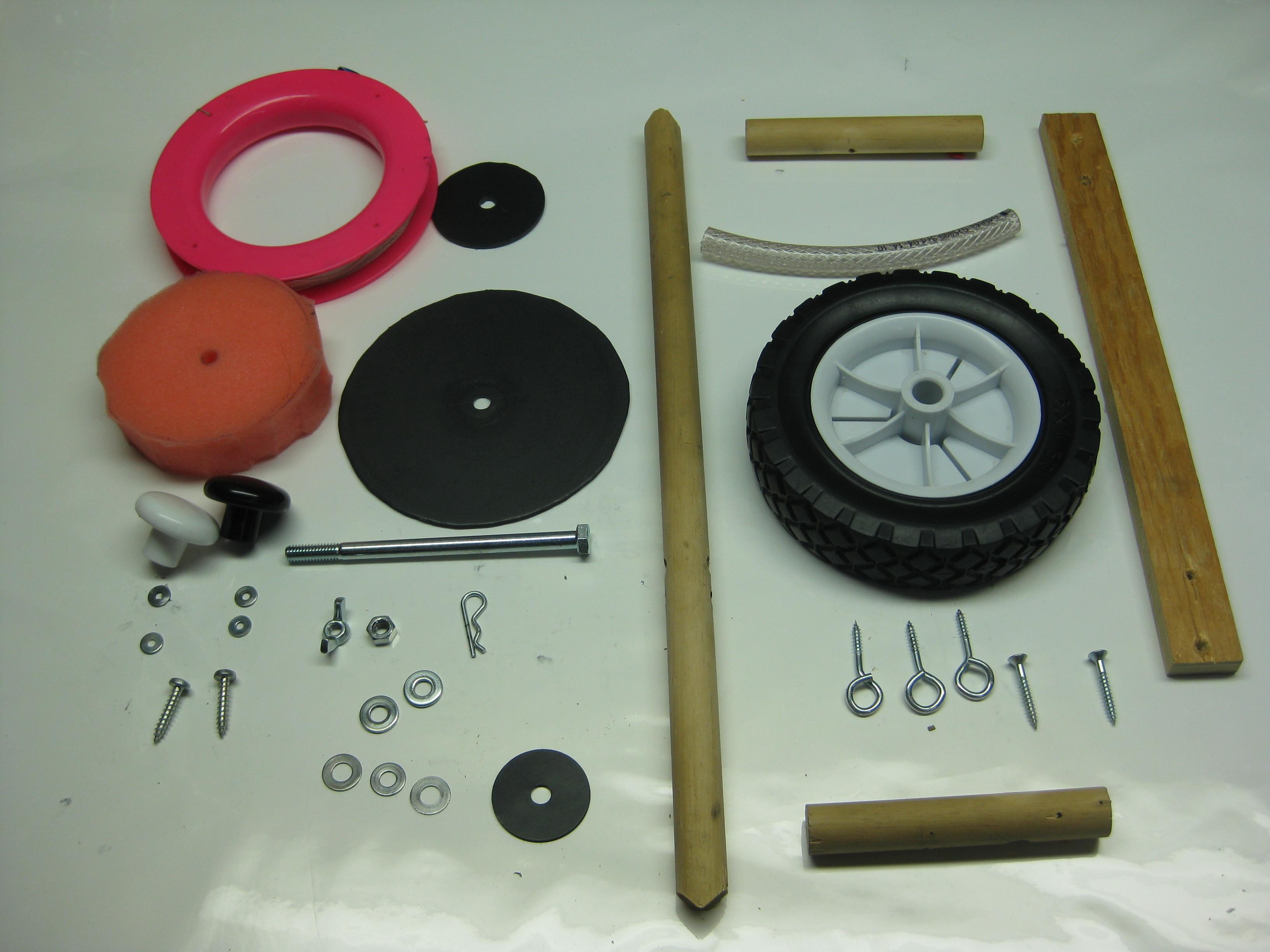This hand-cranked capstan pulls down kites easily and quickly but is lightweight and portable. A power option can be added for even more ease of use.
The line ends up on a removable halo spool, so spools of line with varying weights can be used on the same winder. The winder is built from standard hardware-store parts with common tools in a few hours. Because the line storage is not limited by the size of the winder, the mechanical advantage of a small capstan can be used to pull in a lot of line.
The conventional method of winding the line directly on a lightweight spool under high stress risks collapsing the destination reel due to the elastic band effect. The design shown here limits the tension on the takeup reel to the minimal amount needed to make sure the line will all get on the reel.
The robustness, strength, and small size of the reel/winch comes from the hub of a small lawnmower wheel as a capstan with a long 5/16″ steel axle bolt mounted on a hefty wooden dowel. The widely available, lightweight halo reel is supported with soft, lightweight open cell foam that forms part of the slipper clutch that limits the winding tension.
The dowel is fitted for one hand to hold braced against the cranker’s waist while the other hand powers the capstan with either the high power or high speed knobs on the crank handle (or a drill chucked with a nut driver to match the axle bolt head).
The materials are chosen for easy construction in a home workshop. The trickiest operation is cross-drilling the axle twice for a cotter pin and a hitch pin.
Some care is needed for threading the kite line on the winch—especially with a kite that is pulling strongly (use gloves)—but it is a straightforward operation once learned. Then launching and flying the kite to altitude is easily done with just the halo, and the winding down is done with the winch. The winch can be used to wind out line also but this requires extra manual care, or a drum adaptor specific to the halo size.



